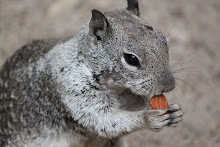
Initially, Olmsted's vision was to create a place to observe and respect nature, with culture as a secondary concern. During the early years, the park catered to the upper class, and gatherings and music were discouraged. These principles of an oasis, an escape from the city, in the middle of the city, guided the development of the park. As the years passed, this idea did not fit the park that the city needed. Over time, it became a place with a wide variety of uses, for play.
Geographically, or typographically, the park is 51 blocks deep, with a perimeter of 6 miles, and 843 acres of park land.
More stats: 26,000 trees. 58 miles of pedestrian paths. 36 uniquely designed bridges. 9,000 benches. 21 playgrounds. Not to mention, the park is ecologically diverse, with 275 species of migratory birds that make their way through.

Aside from these numbers, the park is rich with a lake, waterfalls, broad walkways, scenic overlooks, a pond filled with turtles, and a garden with plants from Shakespeare's plays and books. There are activities galore, and it is a perfect space for dogs, readers, musicians, sunbathers, carousel riders, ice skaters, roller-bladers and bikers (http://thirtyconversationsondesign.com/lindatischler/index.html).

At the end of the project, the landscape looked nothing like the land did before. It was completely transformed by Olmsted's design, and the Irish and Russian immigrant workers who actually made it. Olmsted's design has allowed people to enjoy the public facility in harmony as a function of the park's physical characteristics.
Interesting to note: With sculptures of famous men throughout the park, and one famous dog, there are no sculptures of notable women (only fictional: Shakespeare's Juliet, Alice in Wonderland). Someone, go build a sculpture of a woman in Central Park!

No comments:
Post a Comment